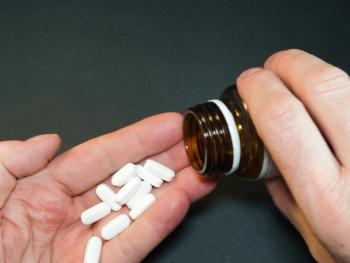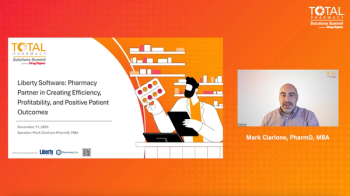
- Drug Topics March 2018
- Volume 162
- Issue 3
Pharmacists Help Drive Down Infection Rates
Hospital-acquired infections continue to plague the nation’s hospitals. Here’s how pharmacists are helping address the problem.
Hospital-acquired infections (HAIs) continue to plague the nation’s hospitals. However, significant progress has been made in preventing many of the most common infections.
Between 2008 and 2016 there has been a 50% decrease in central line-associated bloodstream infections (CLABSIs) as well as with other common HAIs, according to the latest data from the CDC [See Figure 1].
Progress in reducing incidents of HAIs is attributed in part to collaborative efforts among healthcare providers including pharmacists. In recent years, pharmacists have successfully integrated their services and expertise and have been welcomed as full members of pediatric, surgical, medical, and ICU patient care teams.
“Health system pharmacy is part of the bundles [multidisciplinary teams] to reduce infection,” says Jeanette J. Harris MS, MSM, infection prevention surgical services specialist at MultiCare Health System in Tacoma, WA.
Pharmacists are increasingly becoming involved in antibiotic surveillance, including e-surveillance methods; formulation of antibiotic-use policies; and day-to-day control of problematic antibiotic use. Many pharmacists are now relying more on technology like e-surveillance to help them accomplish those tasks.
“Rather than broad-spectrum antibiotics for 10 days, pharmacists can use e-surveillance to track changes in culture results and ensure appropriate targeted therapy, downgrade the delivery from IV to oral therapy, and make other interventions that will help reduce the risk of C. diff or multi-drug-resistant infections,” says Harris. These activities positively impact the facility, insurance company, and the patient, she adds.
Pharmacists’ responsibilities for antimicrobial stewardship and infection prevention and control, according to
- Promoting the optimal use of antimicrobial agents,
- Reducing the transmission of infections, and
- Educating health professionals, patients, and the public.
“Over the past seven to eight years, we have observed a strong increase in the importance of HAI prevention to c-suites across the country,” says Chad Glover, vice president and general manager of MedMined Surveillance Advisor, at Becton, Dickinson and Company. This has led to more infection-prevention-related activities and additional resources to monitor and prevent HAIs. Glover says many hospitals have achieved measurable improvements in their HAI rates.
MultiCare’s Harris notes that she has seen a reduction in CLABSIs at her facilities and attributes the decline to the work of multidisciplinary teams. “The reason bundles work is because it’s never just one thing that causes an infection. Infections have many different pathways, and we use MedMined data to identify the gaps that we can fill by implementing bundles to block the infection pathway.” MedMined can enable facility-wide surveillance of all infection types, she says.
Harris adds that doing just one thing won’t work. “We need to do all those things all the time to reduce infections. The fact that CDC’s National Healthcare Safety Network recalculated all standardized infection ratio (SIR) targets in 2017 and all targets were lower than before, is a testament to the hard work done to reduce hospital associated infections.”
Articles in this issue
almost 8 years ago
Hospital Pharmacists Struggle with Sterile Water for Injection Shortagealmost 8 years ago
Four Ways Pharmacists Are Fighting Opioid Abusealmost 8 years ago
How to Manage Medication Risksalmost 8 years ago
Small Doses: March 2018 Editionalmost 8 years ago
Two Crucial Skills Pharmacists Will Need to Succeed in the Futurealmost 8 years ago
First in Class Drug for Glaucoma: What Pharmacists Need to KnowNewsletter
Pharmacy practice is always changing. Stay ahead of the curve with the Drug Topics newsletter and get the latest drug information, industry trends, and patient care tips.











































































































































































































